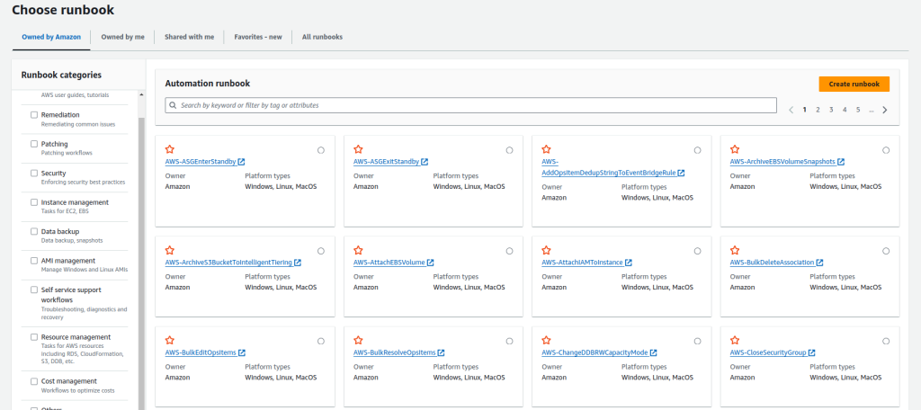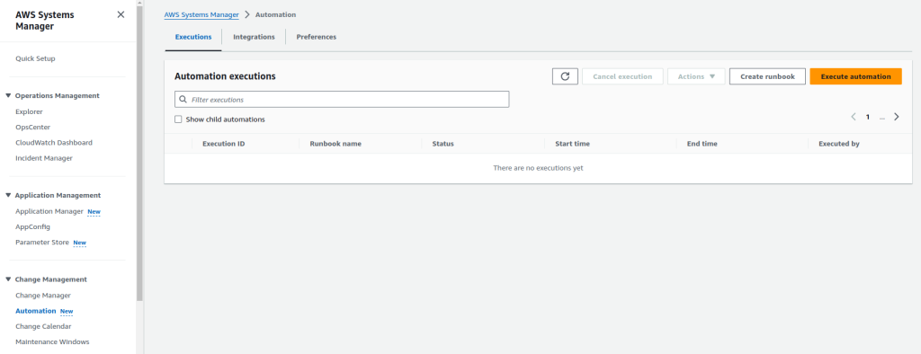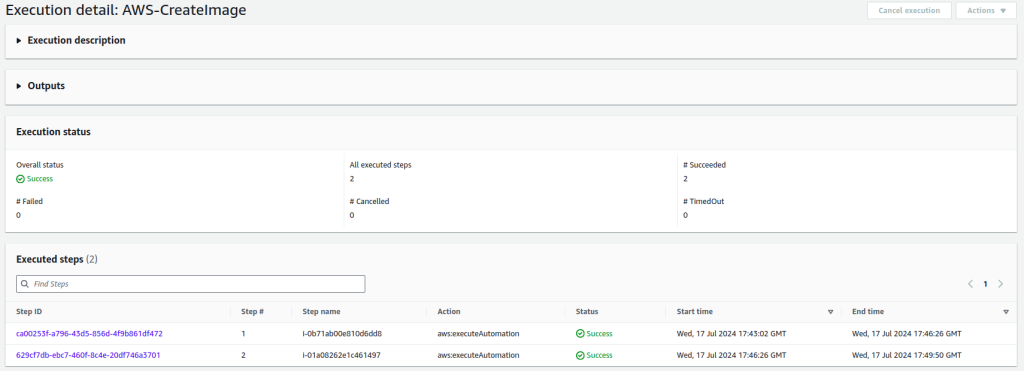Simplifying IT Workflows: Leveraging Automation in AWS for Business Growth
Maintaining a competitive edge in the current times requires businesses to streamline operations, reduce costs, and improve agility. One powerful enabler of this is automation, particularly when it comes to IT workflows. AWS Automation in Systems Manager helps businesses achieve operational excellence by reducing repetitive tasks such as software configuration, deployment, and maintenance, all while improving resource utilization and reliability. By leveraging AWS’s automation capabilities, businesses not only improve efficiency but also set the stage for sustainable growth.
The Power of Automation for Business Growth
Automation in AWS Systems Manager is more than just a technical feature; it’s a strategic tool that allows businesses to streamline operations, reduce manual errors, and free up valuable time. This can lead to enhanced productivity, quicker time to market, and the ability to scale more effectively—all of which are critical to driving business growth. As the demand for cloud services grows, the need to manage cloud infrastructures efficiently becomes more important for maximizing resource utilization and ensuring reliable, uninterrupted services.
What is Automation in a System Manager?
Automation streamlines the management of AWS by reducing repetitive tasks, such as software configuration and deployment, as well as maintenance. The automation of workflows called runbooks in Automation means that jobs are executed consistently because operational efficiency increases with fewer manual efforts and effortless scaling in large environments. Being integrated with the AWS services makes it possible for a person to manage cloud infrastructures efficiently to maximize resource utilization and improve reliability.
Read More: Optimizing Data Migration and Reconciliation for a Leading Accounting Firm: A Success Story with AWS Solutions
What is Automation Runbooks?
An automation runbook refers to a predeveloped package of automated procedures and scripts set in place in a way that runs ordinary activities and resource management in the IT environment. It streamlines operation by reducing manual intervention, guarantees consistency, and minimizes errors. Runbooks come in handy in handling cloud infrastructure since they allow such automation of work as installation of software, changing configurations, and system maintenance that increases efficiency and reliability. AWS Systems Manager integrates automation runbooks with many other AWS services, enabling the most extensive automation of complex workflows and operational tasks.
AWS Provided Runbooks for Business Efficiency
Here are some AWS-provided runbooks:

AMI Creation with AWS Systems Manager Automation
The important activity that is performed under the management of infrastructure on AWS is the creation of AMIs, or Amazon Machine Images. Thus, the AMI will give an operative preconfigured operating environment that one can use to launch one’s EC2 instances with the setup of his or her software. Savings in terms of time and reduction in errors due to automating the creation of such AMIs ensure consistency across their environments. AWS Systems Manager Automation is relatively simplified, especially when using a reliable, repeatable, and auditable way of creating your AMIs. Below, we will delve deeper into the step-by-step process of how AWS Systems Manager Automation creates AMIs.
Benefits of Automating AMI Creation
- Consistency: Automated processes reduce the risk of human error and ensure that each AMI is created with the same configuration.
- Efficiency: Automation saves time and effort by eliminating manual steps.
- Scalability: Easily scale your processes to handle large numbers of AMIs.
- Auditability: Maintain logs and records of each AMI creation process for compliance and troubleshooting.
Prerequisites
Before you begin, ensure you have the following:
- IAM Role: An IAM role with the necessary permissions to execute Systems Manager Automation runbooks and create AMIs.
- SSM Agent: Ensure the SSM Agent is installed and running on the EC2 instances you intend to use for creating the AMI. Most Amazon Linux and Ubuntu AMIs have the SSM Agent pre-installed. For other OSes, you might need to install it manually.
- Managed Instance: An Amazon EC2 instance managed by AWS Systems Manager with the Systems Manager agent installed and properly configured.
Step-by-Step Guide
Step 1: Create an IAM role with the required permissions to execute the automation and create AMIs. This role should have the following policies:
- AmazonEC2FullAccess
- AmazonSSMFullAccess
Step 2: Attach the IAM role to the EC2 instance that will be used to create the AMI. Ensure this instance is managed by the AWS Systems Manager.
Step 3: Navigate to the AWS Systems Manager console and click on automation then click on execute automation.

Step 4: Select the AWS-provided runbook or create your own but for this guide, we will use the ‘AWS-CreateImage’ runbook.

Step 5: Deploy this runbook to one or more targets depending on your use case.

Step 6: We will apply it to more than one target; you can create a resource group and add the targets to the group or use tags directly that you have added in your EC2 machine. For example, we have added the tag key: Patch Group and value: WebServers


Step 7: In the input parameter select the IAM role that you have created earlier and set NoReboot to false if a reboot is not required for creating the AMI

Step 8: Set Rate Control and Error Threshold
- Rate Control Concurrency: Define how many instances to run the automation on at a time.
- Error Threshold: Set the error threshold to indicate when the automation will stop in case of some errors or not.

Step 9 (Optional): Optionally, you can also create a CloudWatch alarm to monitor the execution of the automation runbook. Otherwise, you can bypass this step.

Step 10: Click on Execute. An execution ID will be generated, allowing you to monitor the status of your automation runbook as you can see below execution is successfully done.

Step 11: You can see the status of the automation runbook. After successful execution, you can see AMIs being created below in the console for EC2.

Additional Use Cases
AWS Systems Manager Automation supports a variety of automation runbooks for different use cases, such as:
- Deleting Snapshots: Automate deletion of old EBS snapshots that are unused or no longer needed to save money and keep the environment clean.
- Starting and Stopping EC2 Instances: Schedule start and stop times for EC2 instances to improve costs and resource utilization.
- Patching Instances: Applying security patches and updates for an EC2 instance to make it secure and updated.
- Backing Up Data: Automated backups of important data and systems, so the data is safe and recoverable.
- Monitoring and Alerts: Set monitoring and alerting systems based on automated incident response, which will reduce downtime and improve system reliability.
- Compliance Checks: Run compliance checks on your resources more frequently for coherence with organizational standards as well as any regulatory standards.
- Application Deployment: Auto-deploy applications and updates across multiple instances or environments for consistency and less time for deployment.
These are just a few examples. AWS Systems Manager Automation is a set of rich capabilities that can be developed in many different ways to meet your unique business operational needs and optimize efficiency and reliability in your AWS environment.
Real-World Example: E-Commerce Scaling with AWS Automation
Let’s consider an e-commerce platform that handles millions of transactions daily, especially during peak seasons like Black Friday or Christmas sales. Any downtime or performance issues during these times could lead to massive revenue loss and customer dissatisfaction.
Challenge: The company initially faced issues with scaling its infrastructure during high-traffic periods, resulting in slow response times and occasional outages. This led to revenue loss, a damaged reputation, and increased operational costs due to reactive troubleshooting.
Solution: By adopting AWS Systems Manager Automation, the company was able to:
- Automate the scaling of their EC2 instances during peak periods, ensuring the system can handle increased demand.
- Deploy updates faster with automated CI/CD pipelines, ensuring that new features are rolled out without downtime.
- Utilize automated disaster recovery processes to ensure business continuity in case of a data center failure.
Business Growth Impact: The e-commerce company saw a 200% increase in sales during peak periods, with zero downtime and a 25% reduction in operational costs. Their improved infrastructure reliability also led to higher customer satisfaction and increased brand loyalty.
Conclusion
AWS Systems Manager Automation simplifies complex IT workflows, allowing businesses to improve operational efficiency, reduce costs, and ensure scalability. More importantly, it frees up valuable time and resources, enabling teams to focus on innovation and strategic initiatives that drive business growth. By leveraging automation, businesses can stay agile, competitive, and well-positioned to capitalize on future opportunities. Whether it’s automating AMI creation, scaling the infrastructure, or ensuring compliance, AWS Systems Manager Automation provides the tools necessary to streamline operations and fuel business expansion.



